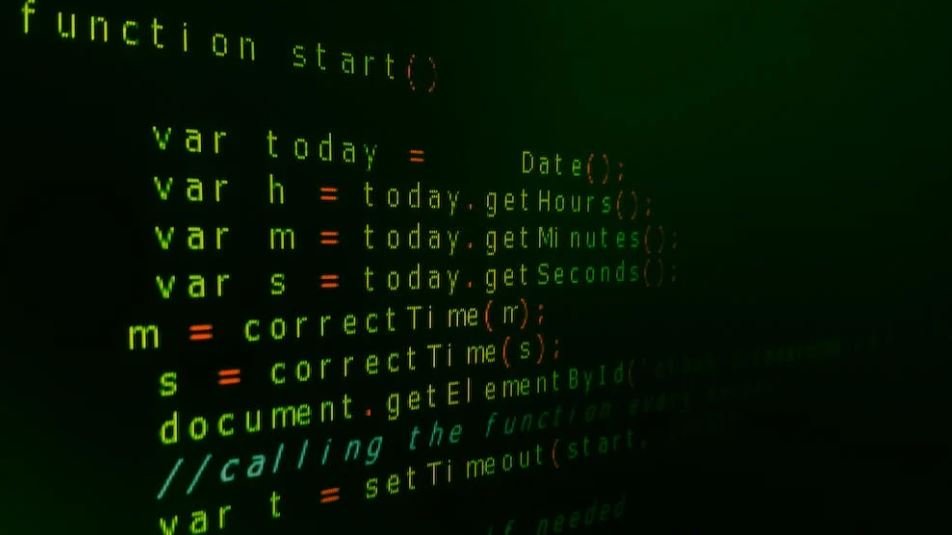AI for Teachers
Artificial Intelligence (AI) is revolutionizing various industries, including education. AI has the potential to transform the way teachers deliver education, making it more personalized and effective. By leveraging AI tools, teachers can streamline administrative tasks, gain insights about student performance, and provide tailored instruction to meet individual learning needs.
Key Takeaways
- AI technology enhances educational practices by making them more personalized and effective.
- Teachers can leverage AI to streamline administrative tasks and gain insights about student performance.
- AI tools enable tailored instruction to meet individual learning needs.
One of the significant benefits of AI for teachers is the ability to automate time-consuming administrative tasks, such as grading assignments and managing schedules. By utilizing AI-powered grading systems, educators can save valuable time that can be redirected towards teaching, planning, and student engagement. Moreover, AI can efficiently handle routine administrative duties, enabling teachers to focus on more meaningful interactions with their students.
- AI automates administrative tasks, freeing up teachers’ time.
- Teachers can dedicate more time to teaching, planning, and student engagement.
- AI efficiently handles routine administrative duties.
AI tools also provide valuable insights into student performance. By analyzing large sets of data, AI algorithms can identify patterns and trends, allowing teachers to understand how effectively their instructional strategies are working. These insights enable educators to tailor their teaching methods to address specific areas of improvement for each student, increasing overall learning outcomes.
- AI algorithms provide insights into student performance.
- Teachers can tailor instructional strategies based on data analysis.
- Personalized approaches improve overall learning outcomes.
An intriguing aspect of AI in education is the ability to provide highly personalized instruction to students. AI-powered learning platforms can adapt to individual learning styles and pace, offering customized content and exercises suitable for each student. This personalized approach enhances student engagement and motivation, as they receive targeted and relevant materials that cater to their specific needs.
- AI offers personalized instruction based on individual learning styles.
- Customized content and exercises increase student engagement and motivation.
- Students receive targeted and relevant materials that cater to their specific needs.
| AI in Education – Benefits | |
|---|---|
| Enhances educational practices | Makes learning more personalized and effective |
| Automates administrative tasks | Saves teachers’ time and allows focus on teaching |
| Provides insights into student performance | Enables tailored instruction for individual learning needs |
While AI for teachers presents significant advantages, it is important to note that AI is a tool to enhance teaching rather than replace educators. The human element remains integral in education, as teachers provide guidance, support, and motivation that AI cannot replicate. By harnessing the power of AI, teachers can optimize their teaching practices and deliver a more personalized educational experience to their students.
- AI enhances teaching but cannot replace educators.
- Teachers provide guidance, support, and motivation that AI cannot replicate.
- AI is a tool to optimize teaching practices and deliver personalized education.
| AI in Education – Concerns | |
|---|---|
| Potential job displacement | Automation of certain teaching roles |
| Data privacy and security | Ensure proper management of student data |
| Equitable access | Addressing the digital divide |
In summary, AI has the potential to revolutionize education by personalizing instruction, automating administrative tasks, and providing valuable insights into student performance. When utilized in conjunction with the expertise and guidance of teachers, AI can empower educators to create a more effective and engaging learning environment for their students.

Common Misconceptions
Misconception: AI replaces teachers
One common misconception about AI for teachers is that it fully replaces human teachers in the classroom. While AI can provide support and enhance the teaching experience, it cannot replace the essential role of a human teacher.
- AI can offer personalized learning experiences that cater to individual student needs.
- Teachers play a crucial role in providing emotional support and building relationships with students.
- AI is a tool to aid teachers in their teaching methods, not a substitute for human interaction.
Misconception: AI is too expensive for schools
Another common misconception regarding AI for teachers is that it is too costly for schools to implement. While some AI technologies may require an initial investment, there are also affordable options available specifically designed for educational institutions.
- AI tools can help streamline administrative tasks, saving time and resources.
- Schools can choose AI solutions that align with their budgets and needs.
- AI technology can improve efficiency and productivity in the long run, offsetting the initial costs.
Misconception: AI is biased or unfair
Many people assume that AI for teachers may introduce biases or unfairness into the classroom. While it is important to address biases in AI algorithms, when used responsibly, AI can actually help reduce bias and promote fairness.
- AI can analyze data and provide objective insights, helping identify potential biases in teaching materials or assessments.
- Properly trained AI algorithms can ensure better fairness and equality in educational outcomes.
- Human teachers still have the final decision-making power and can correct any biases that may arise.
Misconception: AI replaces the need for student-teacher interaction
Some individuals might believe that AI for teachers diminishes the importance of student-teacher interaction. However, AI is designed to complement and enhance these interactions, not replace them.
- AI can assist teachers in identifying areas where students may need additional support or guidance.
- Collaborative learning experiences between students and teachers are essential in fostering critical thinking and social skills.
- AI can provide valuable data that helps teachers make informed decisions about student progress and individualized instruction.
Misconception: AI takes away jobs from teachers
There is a misconception that AI for teachers will lead to job losses for educators. In reality, AI can relieve teachers of certain repetitive tasks, allowing them to focus on more meaningful and impactful aspects of teaching.
- AI can automate administrative tasks such as grading, data analysis, and lesson planning, freeing up time for teachers.
- Teachers can invest their time in building relationships with students, personalizing instruction, and providing valuable feedback.
- AI technology is a valuable tool that can enhance a teacher’s abilities rather than threatening their profession.

Benefits of AI in the Classroom
In recent years, the integration of artificial intelligence (AI) technology in education has brought numerous benefits to the classroom. The following tables highlight some of the advantages that AI can offer to both students and teachers.
1. Improved Personalization
One of the key benefits of utilizing AI in education is its ability to personalize learning experiences for students. AI algorithms can analyze student data, such as performance and aptitude, to create tailored lessons and recommendations.
2. Enhanced Accessibility
AI can also play a significant role in providing accessibility options for students with disabilities. By leveraging AI-powered tools, educators can ensure inclusive learning environments and offer support to students with diverse needs.
3. Intelligent Tutoring Systems
Intelligent tutoring systems powered by AI can provide personalized feedback and guidance to students. These systems can adapt to individual learning styles and offer targeted assistance, fostering self-directed learning and empowering students.
4. Efficient Grading and Feedback
Automated grading and feedback systems based on AI can reduce the burden on teachers by streamlining the process. These systems can provide timely and accurate assessments, allowing educators to focus on teaching and providing meaningful feedback to students.
5. Adaptive Assessments
AI technology enables the development of adaptive assessments that dynamically adjust the difficulty level based on the student’s responses. This approach ensures that each student is challenged appropriately and promotes continuous growth.
6. Assisting Teachers in Lesson Preparation
AI tools can assist teachers in preparing impactful lessons by offering resources, lesson plan suggestions, and educational content tailored to specific topics and grade levels.
7. Data-Driven Decision Making
AI enables educators to collect and analyze vast amounts of data, providing insights for informed decision-making. Teachers can identify learning patterns, gaps in knowledge, and areas needing improvement, thus enhancing instructional strategies.
8. Virtual Reality (VR) and Simulations
With the integration of AI and virtual reality (VR), students can engage in immersive learning experiences. VR simulations and AI-generated environments allow students to explore complex concepts and scenarios in a hands-on and interactive manner.
9. Language Learning and Translation Support
AI-powered language learning tools assist students in acquiring foreign language skills. These tools provide translation support, pronunciation feedback, and language comprehension exercises, making language learning more engaging and effective.
10. Supporting Student Well-being
AI technologies can contribute to student well-being by detecting signs of emotional distress or mental health issues. Through sentiment analysis and monitoring tools, educators can identify and intervene when students may require additional support.
In conclusion, the integration of AI in education offers a wide range of benefits, including personalized learning experiences, improved accessibility, and more efficient tasks such as grading and lesson preparation. AI can assist teachers in making data-driven decisions, provide immersive learning experiences, and support student well-being. By leveraging AI technology, educators can foster a more engaging and inclusive classroom environment, empowering students to reach their full potential.
Frequently Asked Questions
What is AI for Teachers?
AI for Teachers is a technology that employs artificial intelligence to assist and enhance the teaching process. It involves the use of advanced algorithms and machine learning techniques to analyze data and provide personalized support to educators.
How can AI be beneficial for teachers?
AI can be highly beneficial for teachers as it helps automate routine tasks, provides personalized learning experiences to students, assists in grading and assessment, and aids in identifying students’ learning gaps to provide targeted interventions. It also allows teachers to focus more on individual student needs.
What types of tasks can AI in education perform?
AI in education can perform a wide range of tasks, including automated grading, intelligent tutoring systems, adaptive learning platforms, plagiarism detection, natural language processing for essay analysis, data analytics to identify student patterns, and more.
Are there any risks or disadvantages associated with AI for Teachers?
While AI for Teachers offers numerous benefits, it also presents some risks and disadvantages. These can include issues with data privacy and security, potential biases in algorithms, overreliance on technology, and the need for adequate training and support for educators to effectively utilize AI tools.
How can AI support students with different learning styles?
AI can support students with different learning styles by providing personalized learning experiences. Through adaptive learning systems, AI can tailor educational content, pace, and learning pathways according to individual student needs. This allows students to learn at their own pace and in a way that aligns with their preferred learning style.
Can AI replace human teachers?
No, AI cannot replace human teachers. While AI can assist and enhance the teaching process, human interaction, emotional intelligence, and the ability to provide personalized support are still vital aspects of education that AI cannot fully replicate.
How can AI help in identifying students’ learning gaps?
AI can help identify students’ learning gaps through data analytics and continuous assessment. By analyzing students’ performance data, AI algorithms can pinpoint areas where students are struggling or need additional support. This enables teachers to provide targeted interventions and personalized learning plans.
Is AI a cost-effective solution for schools?
Implementing AI in schools can entail initial costs, such as acquiring the necessary hardware and software, training teachers, and developing or integrating AI solutions. However, in the long run, AI can offer cost-effectiveness by automating certain tasks, reducing the need for external resources, and improving overall efficiency in educational processes.
Are there any ethical considerations with AI for Teachers?
There are ethical considerations with AI for Teachers, including the need to protect student data privacy and security, ensuring transparency in algorithmic decision-making, addressing potential biases in AI systems, and providing equitable access to AI tools for all students.
How can teachers adapt to using AI in their classrooms?
Teachers can adapt to using AI in their classrooms by receiving proper training and support. Educational institutions can provide professional development opportunities to familiarize teachers with AI tools and help them integrate them effectively into their teaching practices. Ongoing collaboration and feedback between teachers and AI developers can also help refine and improve AI for Teachers.




